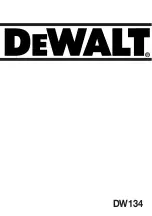
Measuring and weighing
11
Australian metric measurements
ml
1 teaspoon
5
1 tablespoon
20
1 cup
250
Care, cleaning and storage
10
Cleaning after use
1. Always ensure the speed control dial is in the
‘0 – Stand By’ position, the mixer is switched
off at the power outlet and the power cord
is unplugged.
2. Remove the beater, dough hook or whisk and
mixing bowl from the mixer. Follow instructions
in ‘Assembly and operation of your Wizz Mix
Professional’ on page 7, referring to
steps 11 to 15.
3. Wipe the Mixer motor head and Mixer stand
with a soft, damp cloth then dry thoroughly.
4. Wipe any excess food particles from the
power cord.
5. Wash the bowl, beater, dough hook, and whisk
in warm soapy water with a soft cloth or they
can be washed in the dishwasher. Rinse and
dry thoroughly.
Do not use abrasive scouring pads or cleaners
when cleaning the mixing bowl, flat beater,
dough hook or whisk as these may scratch the
surface. Also ensure that the attachments are
not soaked in water for extended periods of
time, for example several hours or overnight, as
this may damage the finish.
Note
Do not wash or immerse the Mixer motor head
and Mixer stand in water or any other liquid.
Clean with a soft, damp cloth and dry
thoroughly. Do not allow water or any liquid to
enter the gear system as damage may result.
Note
Storage
Your Breville Wizz Mix Professional should be kept
in a convenient position on your kitchen bench top
or in an accessible cupboard.
Always ensure the speed control dial is in the
‘0 – Stand By’ position, the mixer is switched off at
the power point and the power cord is unplugged.
Store the mixing bowl in the bowl locking recess
in the Mixer stand.
Place the attachments inside the mixing bowl and
lower the Mixer motor head into the horizontal
(closed) position.
The motor head cannot be taken off the base for
any purpose.
Note
NEVER IMMERSE THE MIXER, POWER CORD OR PLUG IN WATER OR ANY OTHER LIQUID.
Care should be taken when weighing and measuring ingredients to achieve accuracy and consistency.
Recipes in this instruction book have been developed using Australian metric weights and measurements.
For New Zealand customers New Zealand metric measurement
ml
1 teaspoon
5
1 tablespoon
15
1 cup
250
The New Zealand tablespoon is 5ml less than the
Australian tablespoon, so care should be taken when
measuring ingredients to compensate for the variance.
For example, 1 Australian tablespoon = 1 New Zealand
tabl 1 New Zealand teaspoon.
It is important to note that New Zealand ingredients,
especially flour and yeast, can differ from Australian
equivalents. In the Vital Ingredients section
(Pages 15–17) suitable New Zealand products
have been listed.
We suggest these New Zealand products be
substituted for the Australian products in the
Recipe Section.
For further New Zealand bread making assistance
Telephone: 0800 273 845.
Metric weighing scales
For consistent results it is recommended that a set
of metric weighing scales be used to weigh larger
quantities as they provide greater accuracy than
measuring cups.
Tare (zero) the scales with the container in position
then spoon or pour ingredients in until the desired
weight is achieved.
In general, water weighs the same in grams as it
measures in millilitres.
Note
Metric measuring cups and spoons
If using graduated metric measuring cups, it is
important to spoon the dry ingredients loosely into
the required cup. Do not tap the cup on the bench
or pack the ingredients into the cup unless otherwise
directed. Level the top of the cup with a knife.
When using graduated metric measuring spoons,
level the top of the spoon with a straight edged
knife or spatula.
Metric liquid measuring jugs
If using a graduated, metric measuring jug, place jug
on a flat surface and check for accuracy at eye level.
DO NOT USE TABLEWARE CUPS OR SPOONS. DO NOT USE TABLEWARE JUGS OR MEASURING CUPS.







































